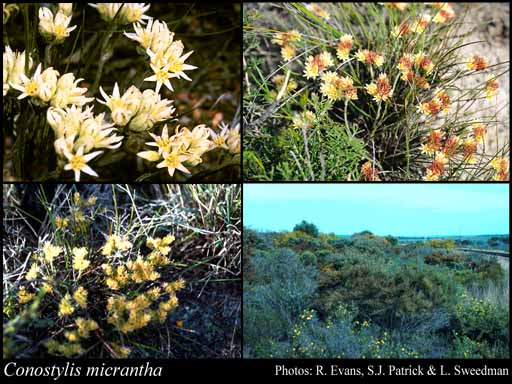- Reference
- Fl.Australia 45:461 (1987)
- Conservation Code
-
Threatened
A taxon name retains its ‘Threatened’ status until a new name has been officially endorsed and appears in the Gazettal Notice.
- Naturalised Status
- Native to Western Australia
- Name Status
- Current
Rhizomatous, tufted perennial, grass-like or herb, 0.13-0.24 m high. Fl. yellow-cream/red, Jul to Aug. White or grey sand. Sandplains.

Scientific Description
Leaves round (leaves terete), 70-145 mm long, 0.8-1 mm wide; bristles or hairs on the leaf margin present, 8-10.5 mm long, with at least some small side branches at the base, straight and rigid, diverging outward at around 90° or angled towards the leaf apex; hairs on the surface of the leaf absent (leaf surfaces glabrous). Scape present, hairy, 65-130 mm long. Inflorescence subtended by a bract 3-5 mm long, with several flowers; floral bracts 1-4 mm long; pedicels present, 1-3 mm long; flowers 5.5-7.5 mm long. Perianth hairy, radially symmetrical, suffused with a darker colour over the base colour, white to cream or yellow, with six more or less equal tepals, the inner segments 3-3.5 mm long. Stamens six, in one level; filaments 0.5-0.7 mm long; anther 1.5-2 mm long, without an appendage. Style 4-4.5 mm long. Flowers in July or August. Occurs in the Geraldton Sandplains and Avon Wheatbelt IBRA bioregion(s), of the South-west Botanical Province. Conservation Code Threatened (T).
Distribution
- IBRA Regions
- Avon Wheatbelt, Geraldton Sandplains.
- IBRA Subregions
- Geraldton Hills, Merredin.
- Local Government Areas (LGAs)
- Greater Geraldton, Irwin, Mingenew.